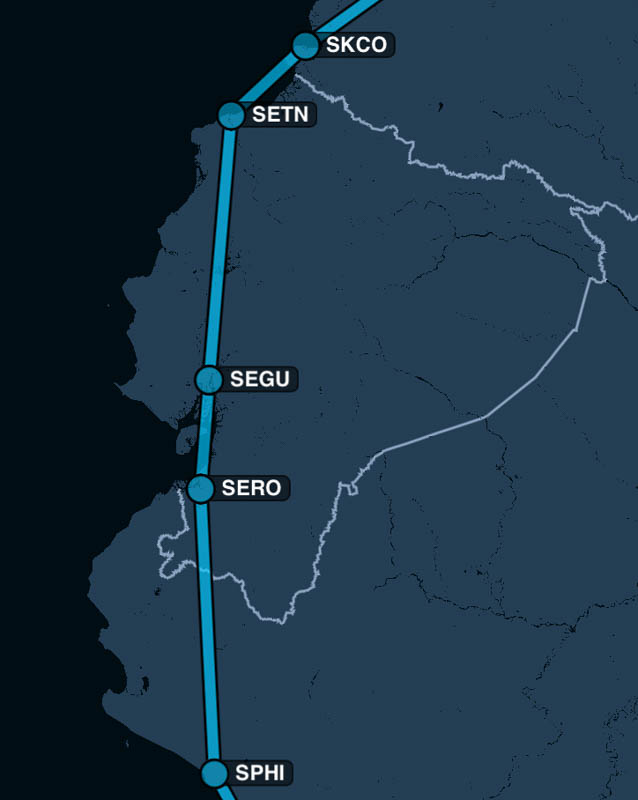
Arriving in Esmeraldas (SETN), the flight to Guayaquil (SEGU) and the flight to Chiclayo (SPHI, Peru) via Santa Rosa (SERO)
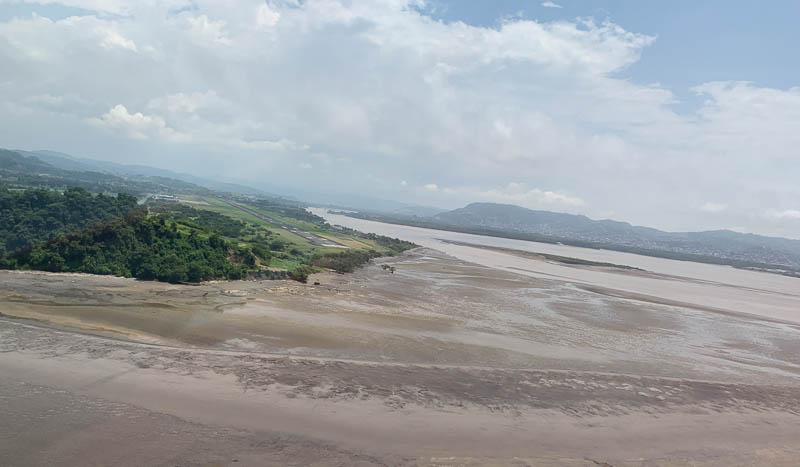
Still March 12th. From Tumaco (SKCO) to the international airport of Guayaquil was too far for my 140 in this rainy weather, so I had my next Escala Tecnica in Esmeraldas (SETN). There were a lot of issues with my Ecuadorian flight permit. As I communicated via an FBO (as wished by the Ecuadorian Authorities), communication was indirect and slow. E.g. they complained that I haven't send them a proof of my last check flight and I answered that my used FAA license is less then 2 years old and according to FAR 61.56 (d)(1) a proof of recent flight experience is not necessary in this case. These delays lead to the unpleasant situation, that I didn't have an Ecuadorian flight permit, when entering Ecuador.
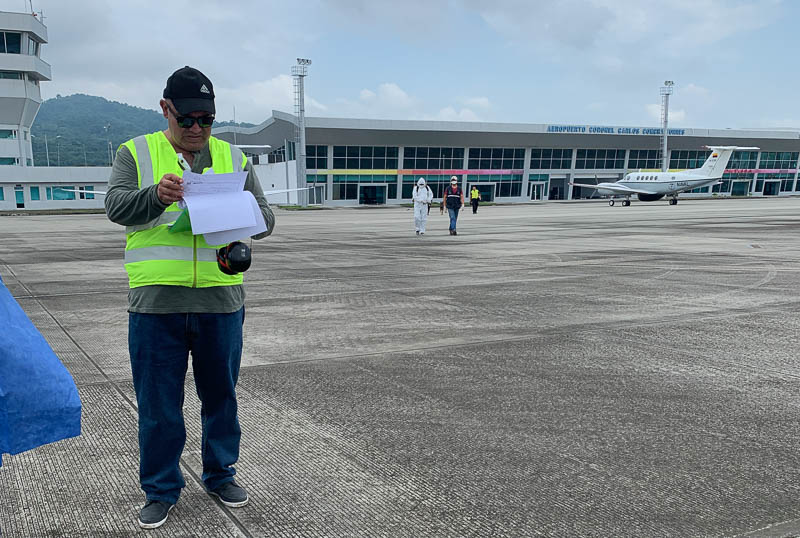
I knew I am in trouble again, when I saw the skeptical face of the inspector coming and stopping a few meters ahead of me and my plane. He didn't come closer, due to the virus. Doctors in protective cloths came to me first, measured my temperature and asked the usual questions. Have you been in contact with persons, who have the virus? Which countries have you visited in the last 2 weeks? How do you feel? Where do you stay? After the doctors cleared me, customs searched my plane and immigration stamped my passport. They all had a lot of time; I was the only customer around. I satisfied them all, but not the inspector. Your flight has not been announced to me, he complained. Do you know that we don't have Avgas here?, he asked. So why this Escala Technica? The flight school will sell me fuel, I argued. They are not allowed to, he countered. (Someone in Guayaquil should have arranged that they would sell me, but this inspector was obviously not part of this arrangement.) Without new fuel, it would be unsafe to continue to Guayaquil. I needed at least 2 USG, so I put my small 2 USG jerry can into my backpack and looked for a gas station. The inspector was very unhappy and showed this.
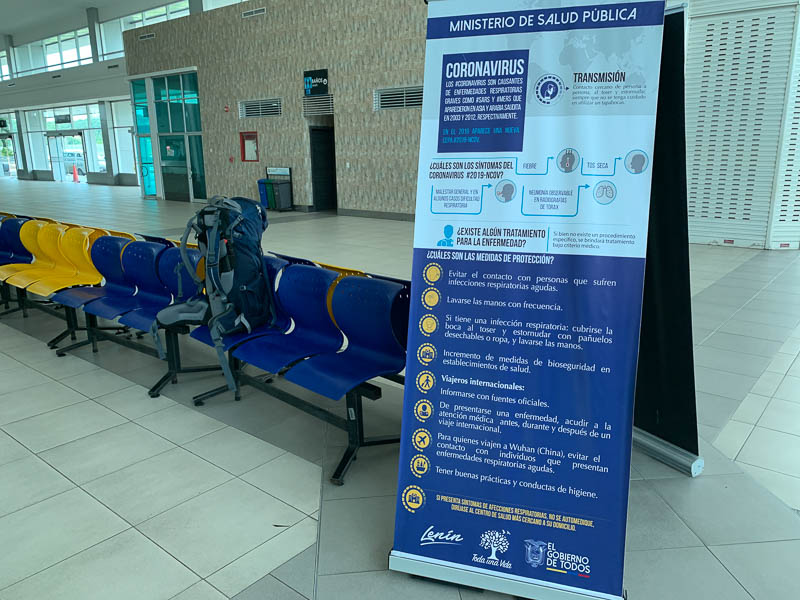
Esmeraldas is an international airport, but my permit didn't allow me to stay overnight. I had requested it, but my FBO agent told me, that the authorities would only agree to an overnight stay in Guayaquil. Not all international airports are available as ports of entry for private planes, I learned. I had told the inspector that I am tired, and this was the case, but the more important reason was, that I needed those 2 gallons of autogas. Purchased them at a gas station. Later I tested, that the fuel doesn't contain Ethanol. Got a SIM chip. Paid 4 US$ for 1.5 Gigabyte of mobile data. If you buy these prepaid chips at the airport and for another country, you usually pay 50 - 100 US$ for it. Like Panama, Ecuador uses US dollar bills and they use them a lot. I have never seen dollar bills that dirty.
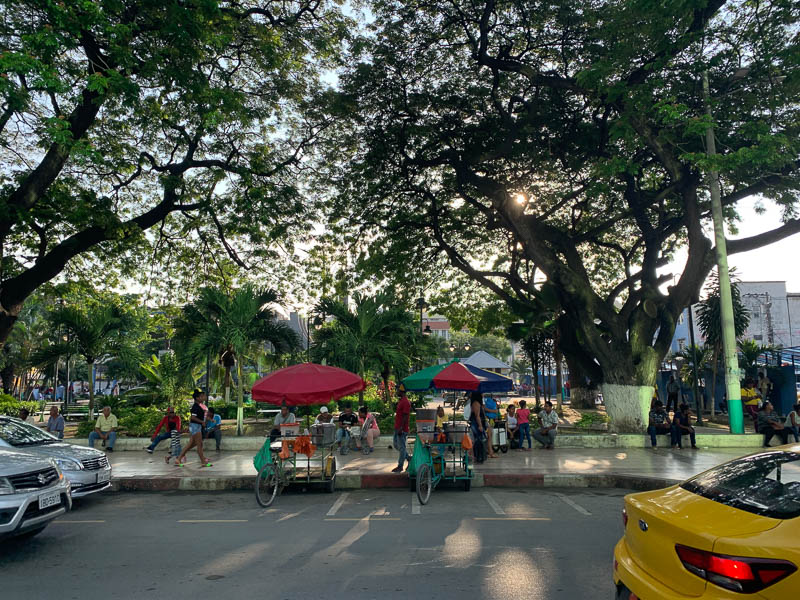
Esmeraldas is a poor, dirty city. But who wants to see pictures of poverty? Picture shows Parque Central at Avenida Simon Bolivar. People enjoyed themselves. Ecuador was the first country on my trip having known cases of the virus, at the time I landed there.
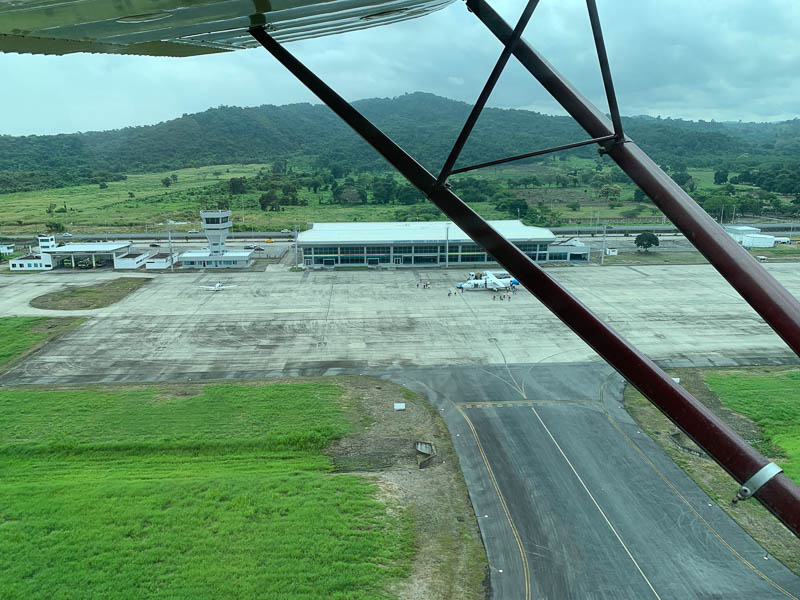
Friday, March 13th. After a night in a 10 US$ hotel room (quite a change from the 100 US$ hotel room I stayed in the night before in Cali) I took a taxi back to Esmeraldas airport. How to get a full jerry can through security? The inspector had thawed, he was friendlier than yesterday. My problem was now his problem. He wanted to get me off his airport, but he also was unsure, if I would be able to make it with this little fuel. Weather was better than yesterday afternoon. The 2 gallons autogas gave me the reserve that made the difference between an unsafe and a safe flight. Inspector wanted me to show him my loadsheet. What? Up to now, nobody had cared about THAT. Well, with wing tanks only half full and without passenger, even a 140 is not weight critical. He took pictures of my fuel gauges and POH, collecting evidences protecting him, in case I would not make it. Was about to start up, when the phone in my pocket notified me about an incoming mail. The Peruvian Authority wants a signed form, not just an email, for my requested changes in the permit. Did it and took off.
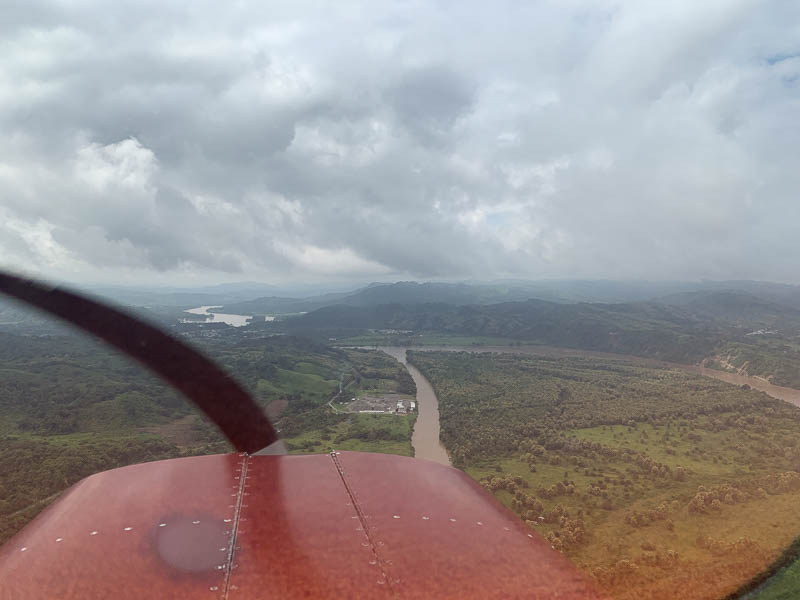
Had to stay low initially. About 1000 ft, following the Esmeraldas river through the mountains. Didn't like to fly that low, because it eats up my reserve.
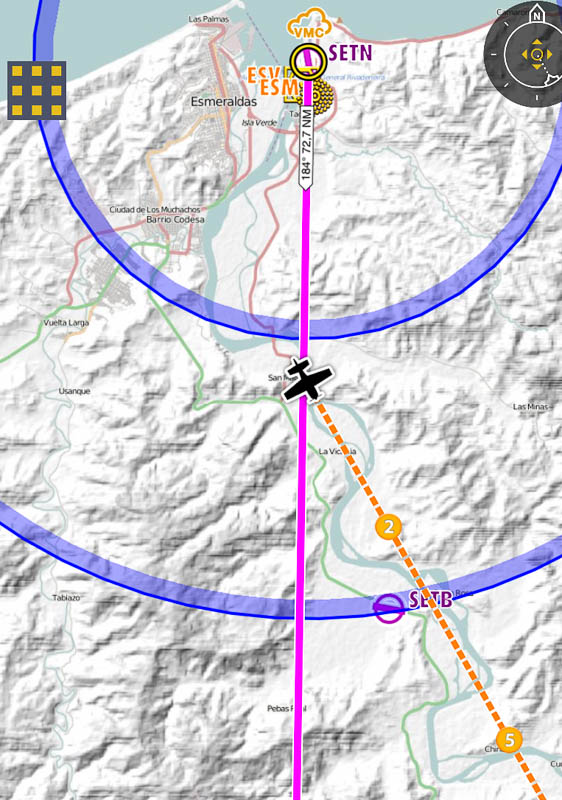
Not only because the route becomes longer when following the windy river. Additionally, flying in 1000 ft to Guayaquil instead of 8500 ft will require 2 gallons more. I had to get up.
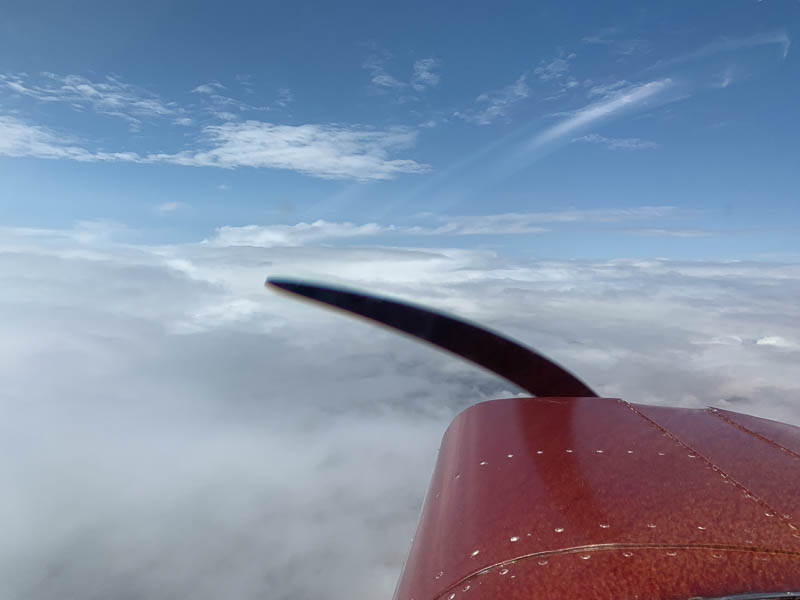
Luckily, I found a hole and was soon established on top.
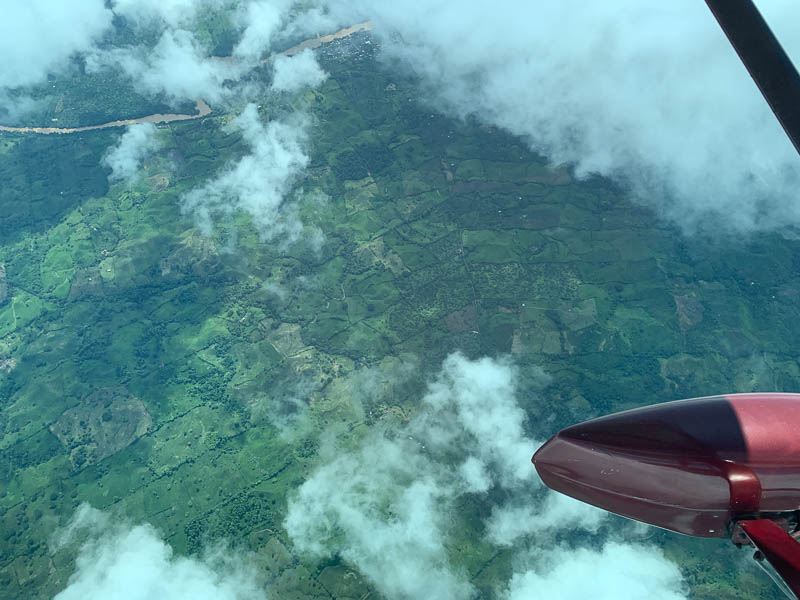
Clouds below became thinner. Saw lots of green fields. Picture shows me crossing the equator at 7938W.
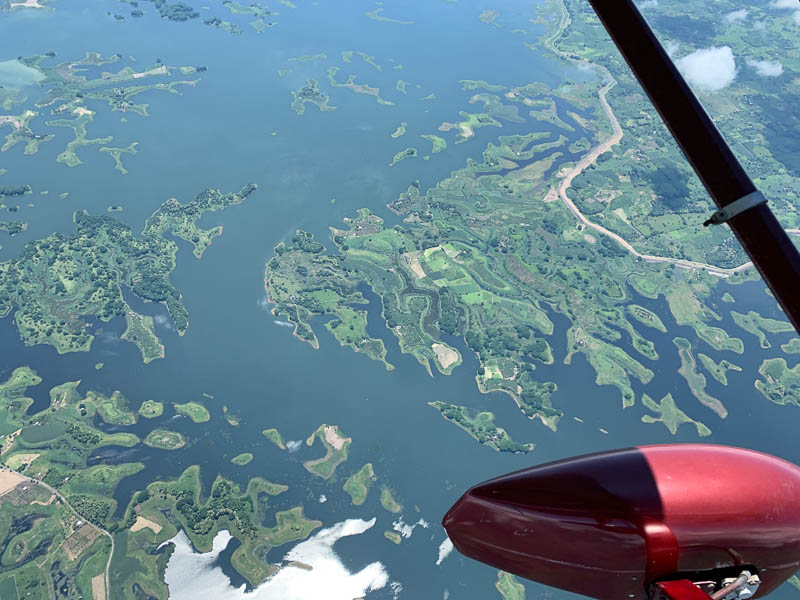
It rains a lot in Ecuador's coastal area and the land is soaking wet. Just north of Guayaquil, it becomes even wetter, with lots of lakes.
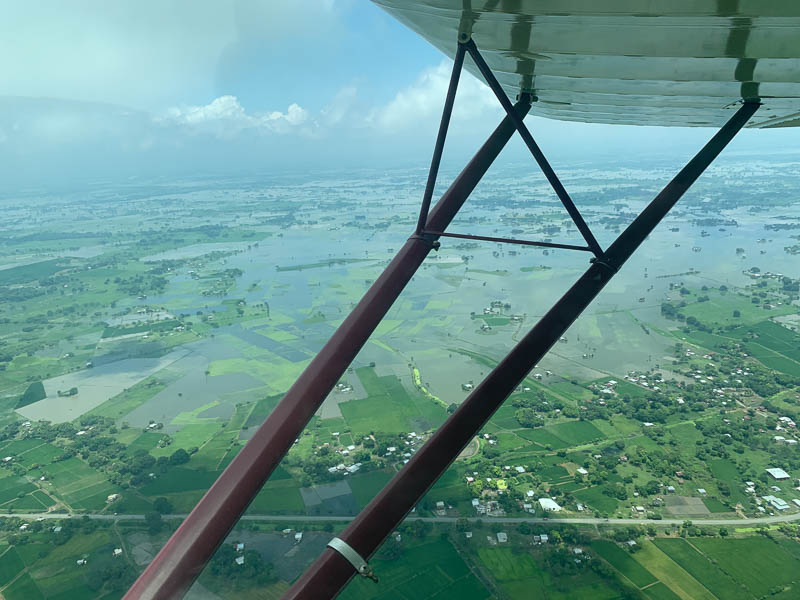
And flooded fields
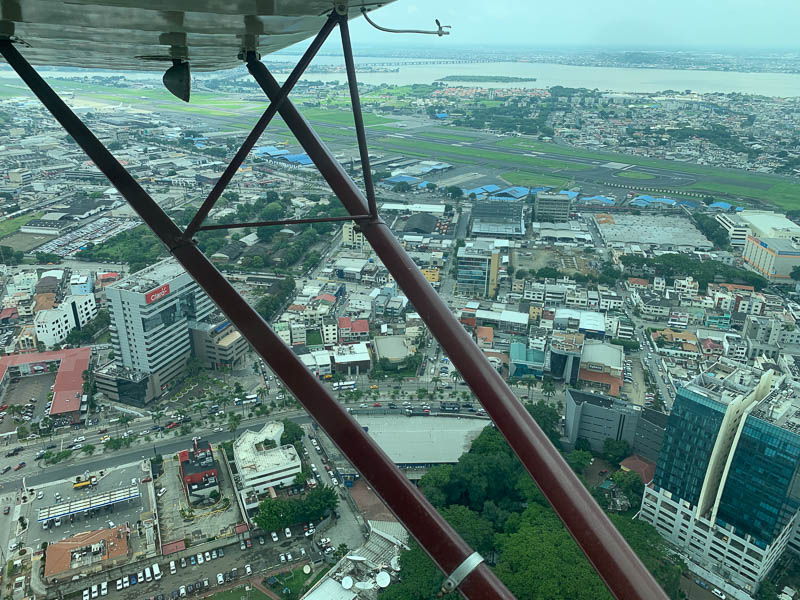
Guayaquil (SEGU) is Ecuador's biggest city (3.3m). Overflew houses for 15 minutes, before I saw the airport. Had studied the arrival routes in the AIP, but there wasn't that much traffic and I got a clearance to enter the left downwind runway 03. Parked at General Aviation. An agent from my FBO gave me a paper briefing package for a flight to Chiclayo (SPHI, Peru) with an Escala Technica in Santa Rosa (SERO). But I didn't want and couldn't fly to Peru today, my permit wasn't ready. Got the aircraft and all jerry cans filled with Avgas. My FBO asked three times, if they could book me a hotel room. No, I don't want this service anymore. Went to the terminal to rest, think and prepare.
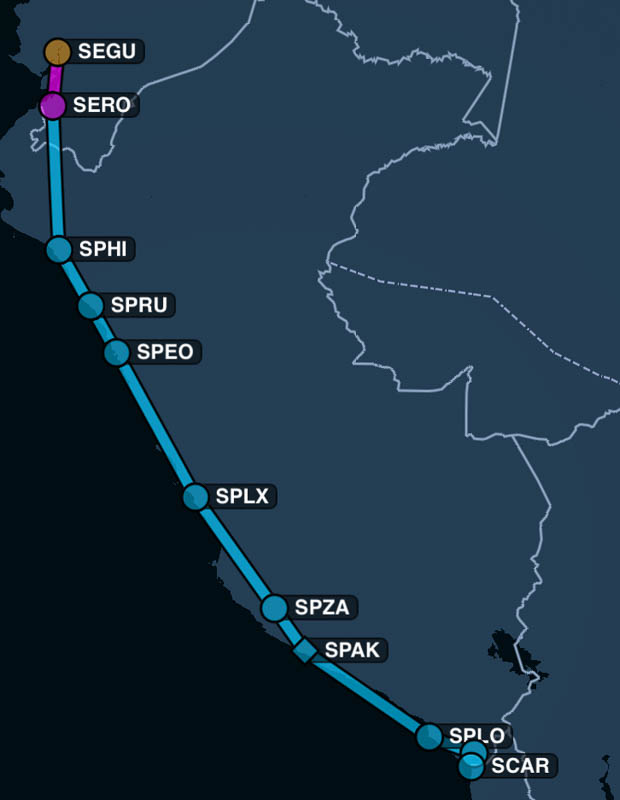
In the last days, communication with pilots in Peru intensified. From them I learned, that bureaucracy in Peru, in some respects, is even worse than in Colombia. I already had solved the issue with the Medical and with the help of Chino, Mitch and others, we burned down the remaining open issues. No FBO was involved, which helped to speed up communication. E.g. the Peruvian Authority denied me the use of Chala (SPHC) and suggested the private field SPAK as an alternative. But who owns SPAK? Could I use it? Who has information about the condition of this runway? Parallel to finding out, I communicated with the Authority. It was Friday afternoon and I needed the permit Saturday morning, if I didn't want to stay until Tuesday in Guayaquil.
Saturday, March 14th. Woke up at 5 AM in my nice self-chosen hotel close to the airport. It was raining heavily, Guayaquil and Santa Rosa both being IMC. It was still dark and when looking out of the window, into the pouring rain, I found it unlikely that I would want to fly today. Took out my raincoat and walked over to the airport. You see more and more people with mouth masks and gloves now, the fear of the virus is spreading. My FBO agent picked me up at 7 AM. She had sent me the bill the day before and someone told me, that she wants twice as much as the usual rate. So we had a tough negotiation and finally agreed on a sum, still much higher than what I was told is right, while she complained that she would lose money now. I believe her. Her employees were sitting around. Very little business for FBOs these days.
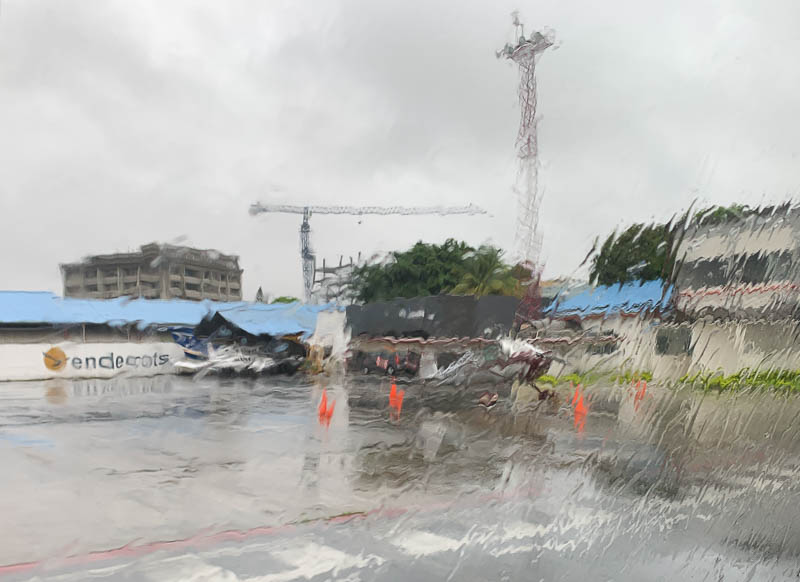
Arrived at my plane. Still raining. Decided to wait for an hour. My destination Santa Rosa (SERO) doesn't offer a forecast and actuals are published only every hour. The 7 AM METAR showed 2 km visibility, rain, scattered 700 ft and overcast 2000 ft - not good. The 8 AM METAR showed 8 km, scattered 1000 ft and overcast 2300 ft - much better. So I decided to go.
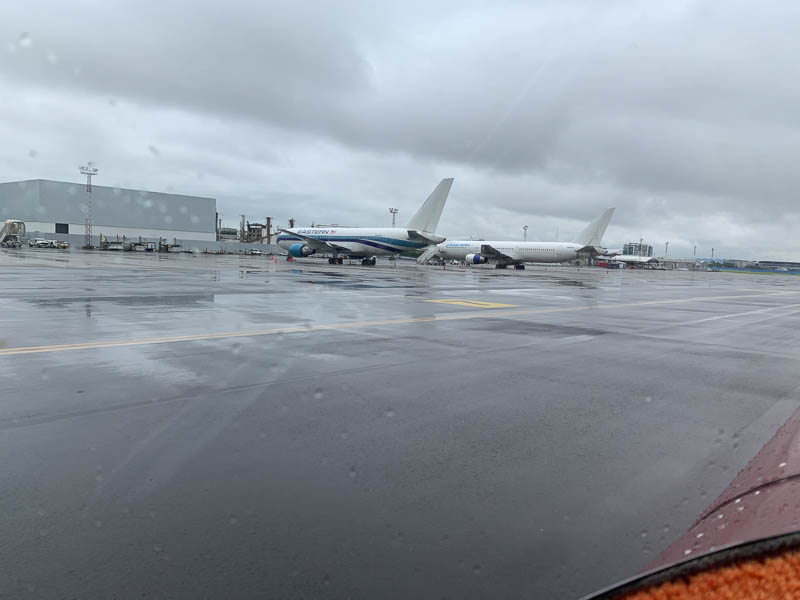
My departure airport Guayaquil has improved too. Rain has nearly stopped, but still overcast in 1000 ft.
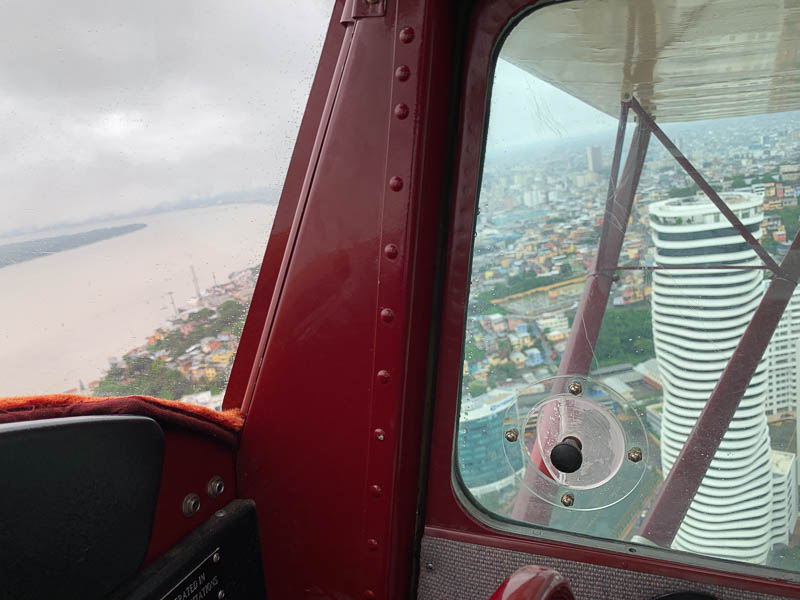
Takeoff Guayaquil runway 21. Got a clearance to turn left and headed for the river to avoid having to fly low over the city.
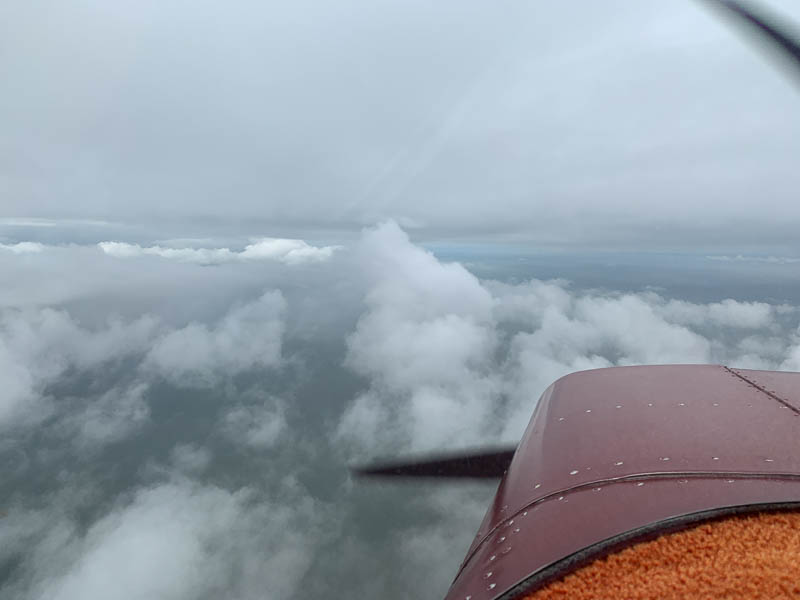
After a while, I could climb above the first cloud layer, but had to stay below a second one. Communication with ATC was difficult. Do you speak Spanish? he asked me after I had repeated my request three times in English. My Spanish is bad, but it was better than his English, so we continued in Spanish, until I left Ecuador's airspace a few hours later.
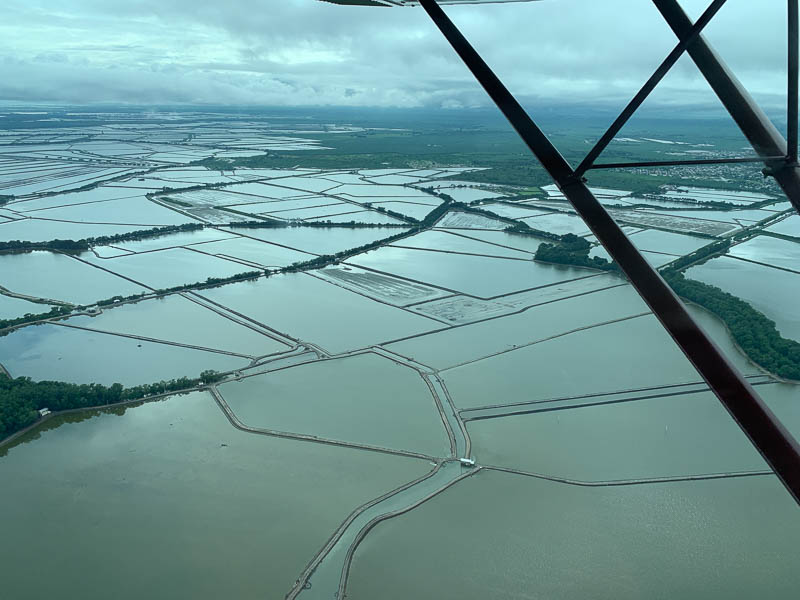
Passed Isla Puna and reached the Isla Jambeli wetlands, just north of Santa Rosa.
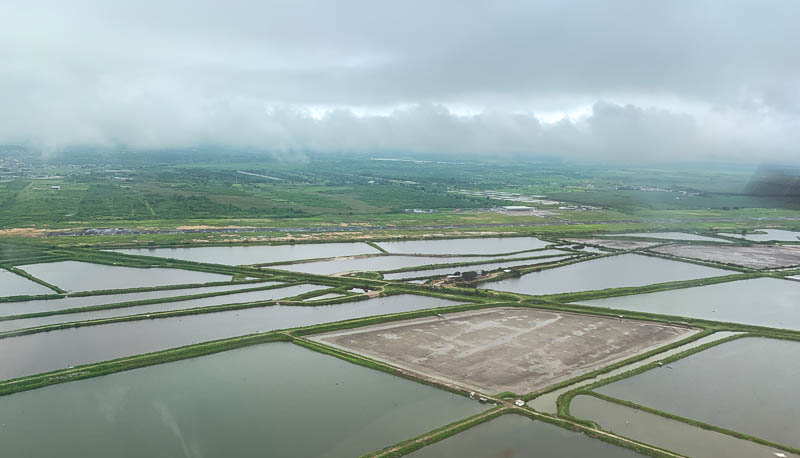
See Santa Rosa's runway and terminal? Still Scattered 1000 ft.
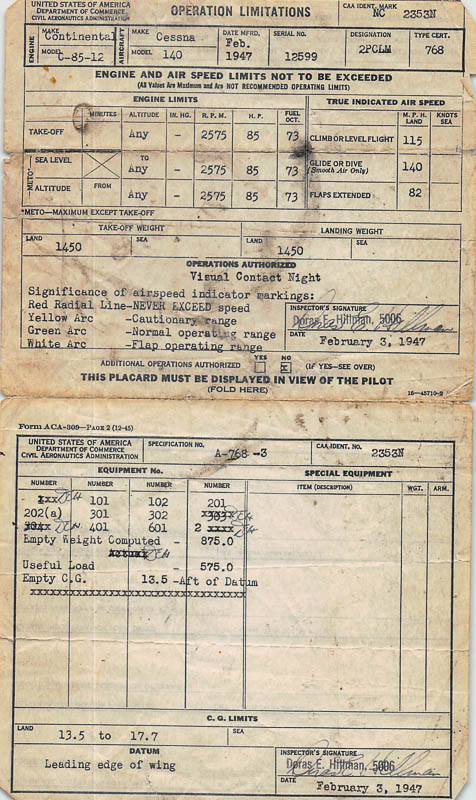
No Avgas in Santa Rosa, but I needed that stop to refuel out of my full jerry cans. Someone must have told the inspector to check my weight and balance carefully and he did, making pictures of even the original weight and balance data from 1947. Spent some time converting pounds in kg and vice versa. Then I was finally ready for Peru.